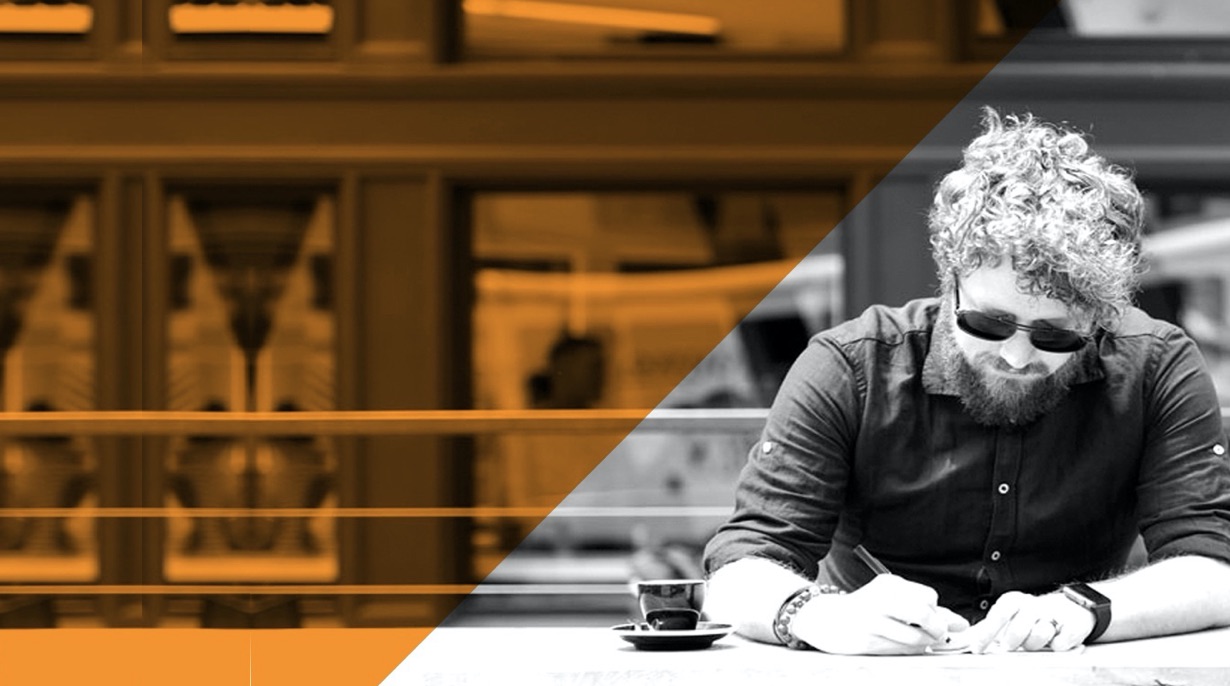
Curious about how technical innovations are changing typography?
As a lead-up to our March salon and workshop with Elliot Jay Stocks, we sat down with the Creative Director of Maido to find out more about the topics he’ll be covering at Type Directors Club on March 12 and 14:
What is Really the (Really) New Typography?
The amazing thing about typography is that its guiding principles have been built up over hundreds of years, and what makes great typography holds true whatever the medium. But in recent years, there have still been some pretty huge advances in the field, led by technology, and there are questions to be answered for designers choosing to work with these new tools. Web type has come of age — but how do you implement features reliably across browsers and platforms? Apps have built upon the foundation laid by web design — but how do you legitimately find and license fonts for use in apps? Variable Fonts offer a way of working with type that goes beyond the limitations of traditional weights, widths, and styles — but how do you actually use them?
What do you think has changed in typography since you last spoke at the TDC six years ago?
At the time, if I remember correctly, OpenType on the web had just come to fruition in terms of browser support and relatively unified CSS used to make use of these features, but since then things have got even better for the web — especially with the advent of OpenType Variable Fonts. That’s probably the single biggest development that interests me. Not only does it upend traditional notions of what makes up a font family, but it brings with it some really important technical benefits for folks working on the web — and questions to be answered, of course!
What is one key thing our members may possibly take away from your talk without giving it all away?
My hope is that the talk will arm attendees with everything they need to make the most of all these amazing new tools we have with digital typography — a one-stop-shop for all of your present and near-future font questions.
For your workshop, what are questions designers have been afraid to ask?
I think there are so many things. Typography is a potentially daunting subject. Even as a professional designer, how do you apply consistent typographic treatments across media? And what even is good typography? It can be hard to judge, and having the right processes in place to make that judgement can be hugely beneficial. So much of typography is about consistency, attention to spacing, and making things appear aligned even if they’re not — as is often the case with default settings. A lot of the workshop focuses on understanding the fundamental rules — and then understanding when and how to break them. This is advice that will hopefully benefit students just starting out right through to veteran professionals who’ve felt that they’ve never quite grappled great typography, or understood some of the more bleeding-edge techniques and tools.
Do you have a particular pedagogy when it comes to workshops? What should they expect?
Participants can expect a fun but information-dense day where we explore some of the foundational aspects of typography to start, and gradually build to a very holistic view on great typesetting practices, with plenty of advanced concepts explored across multiple media by the end of the day. There are plenty of slides and exercises to guide us through the day, but I also like to keep things friendly and informal — it’s great when participants ask questions and really get involved, and I’m always happy to go off on a tangent if that helps attendees get more out of the session.
Is it a lecture or hands-on involvement?
It’s a bit of both. There are very specific sections, so I’ll talk for a bit, introduce (or reiterate) some concepts, and then at the end of the main sections, everyone is set a quick-fire exercise related to what’s been learned in that section. Participants present their outcomes to the group and talk about why they’ve made certain decisions. It’s pretty fun.
Why did you leave Adobe/TypeKit? Were you ready for a new challenge?
I really miss my Typekit team! In fact, I’m meeting up with many of them while I’m in New York. But yeah, after three years there, I wanted to explore some other avenues.
What was that challenge?
Mainly, I wanted to dedicate the majority of my time to Lagom, the lifestyle magazine I founded with my wife in 2014. Around the time I left Typekit, that was growing and needed more time dedicated to it. I also wanted to explore independent life again, as I’d been working freelance for many years prior to joining Adobe. Eventually I did return to employment, though, and we also decided to stop the magazine last year. On reflection, my time at Typekit was one of my career highlights, especially because of the people.
What are you currently working on?
On Mondays, I make music (I release music on a few record labels as ‘Other Form’); on Tuesdays to Fridays I lead the design team at Maido as the agency’s Creative Director. We’re a small digital agency, working mainly in the social impact / non-profit space to use design to improve the lives of millions.
* * *
Elliot Jay Stocks, a designer and musician who is currently the Creative Director of Maido, co-founded the lifestyle magazine Lagom, and is well known in typographic circles as former Creative Director of Adobe Typekit and founder of the typography magazine 8 Faces.
Get in on this conversation with Elliot: